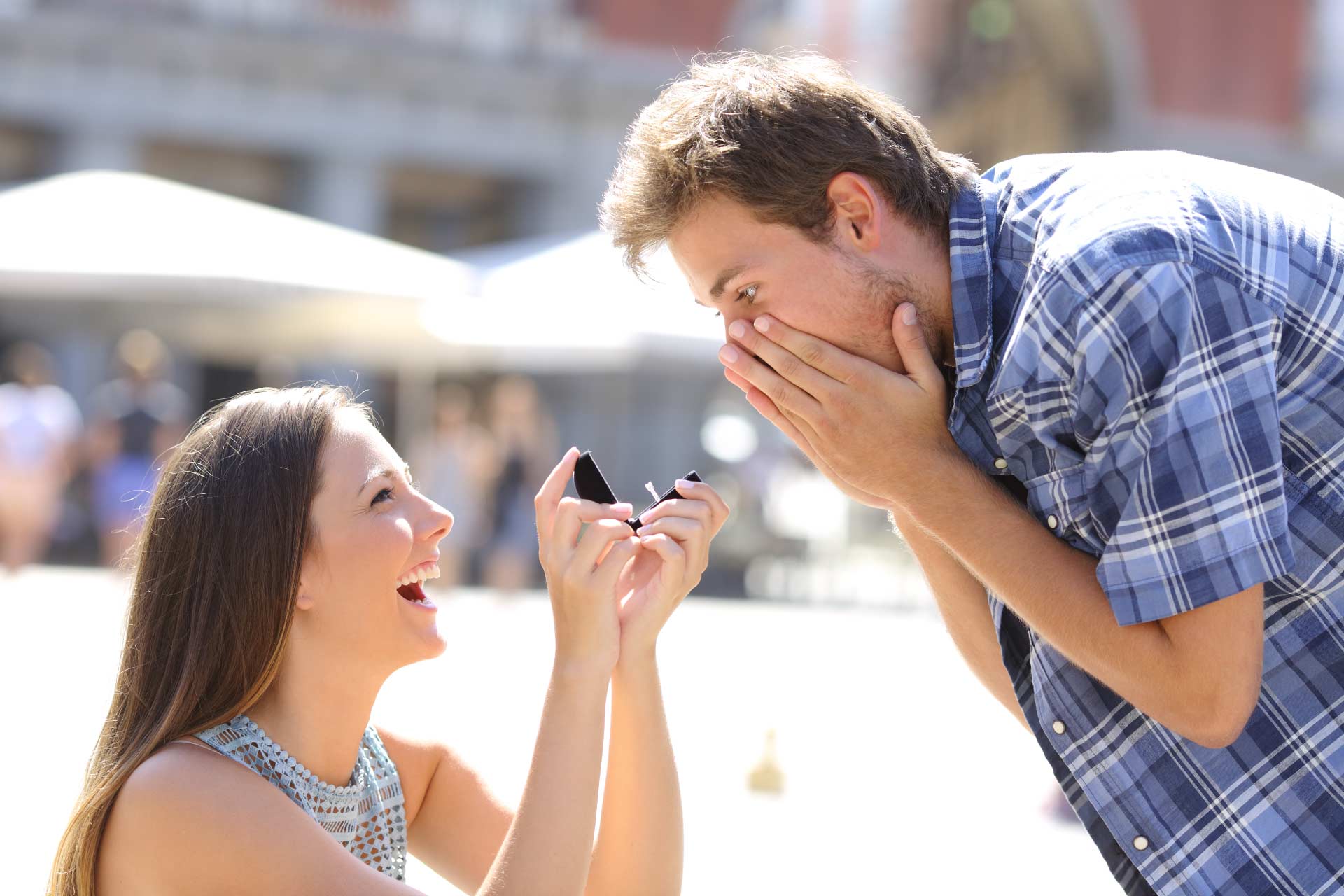
Dr Daniela Pirani, Dr Vera Beckley-Hoelscher and Dr Ratna Khanijou take a critical look at how, while more women are pushing the boundaries, proposing to men reinforces the perception that marriage is the socially accepted way to move forward with relationships.
When Carl and Juliet left their wooden cabin to go on a hike of the Norwegian summer scenery, little did Carl know that his girlfriend was about to propose.
As they headed through the woodlands to a nearby lake, Juliet kept falling behind. Carl thought this was odd as her steady step would usually pace their hikes. Juliet, however, was tirelessly searching the forest floor for lichen to fashion into a ring.
When the couple finally reached the lake, Juliet’s palms were sweaty and her knees weak. She seized the moment, got down on one knee, and ask him to marry her!
Back at the cabin, the freshly engaged couple were buzzing to share the news with their families. Juliet’s mother was astonished her daughter had asked her future husband for his hand in marriage rather than waited for a more traditional proposal…
Women are reshaping wedding rituals
One might wonder about the link between marketing and wedding rituals. Diamond rings have become a common feature of proposals thanks to marketing efforts, and they still dominate popular culture and fantasies around proposals, providing men with a plethora of information on how to choose the perfect ring.
However, wedding rituals are changing. On one hand, marriage have become more accessible, with same-sex marriages becoming legal in several countries. On the other, marriage has lost its importance for many heterosexual couples, whose intimate life does not rely on being wedded.
Proposals are emblematic of this shift. While the business of proposals is expanding, many jewelleries have catered to male same-sex couples, offering equivalent jewellery such as rainbow diamond rings. However, women wanting to propose find themselves without a script to follow, or a material prop to validate their actions.
As marketing researchers, we are interested in how wedding rituals are changing in times of broader fights for gender equality. Stories like Juliet’s show how women are now reshaping wedding rituals, by proposing to their partners. In doing so, they overstep a gendered line which made us wonder: What makes women pop THE question and how is reverse proposal changing wedding rituals?
We collected data from social media conversations, forums, and from 22 interviews with women who proposed to their male partners to understand what does it feel like to conquer one of the last bastions of dominant masculinity. With the help of animation artists Stacy Bias and Clarissa Hanekom, their stories were made into two short films, as part of the Management Ring Project.
Proposal Equality - Mangagement Ring Project. Animation by Stacy Bias
Women proposing: does stealing a thunder create a storm? Animation by Clarissa Hanekom
Combating or reinforcing the hetero-romantic script of wedding rituals?
Our findings show that women who propose are overstepping a gendered line.
While the majority of our interviewees shared positive experiences, women who propose still run the risk of being labelled as desperate, hopeless and emasculating their partners. Social embarrassment, exclusion, and estrangement for families are some of the backlash faced by women who decide to pop the question.
To create new shared imageries, women rely on social media conversations, horizontal support from other women, sharing tips and references to representations of other women proposing in movies and series (yes, Monica in Friends).
Reverse proposals require a degree of creativity and craftiness, borrowing elements from the more conventional script, such as going down on a knee or asking parents for permission. However, women also reported how proposals could be occasions to discuss the future rather than surprise their partner, without the need of grand gestures.
Proposing women perceived themselves as being equals in relationships characterised by open communication and respect.
Women proposing are assembling market opportunities and crafting their own scripts, combining more traditional elements with unconventional ones. In doing so, we observe how reverse proposals provide new material to the hetero-romantic script of wedding rituals, rather than overturning them.
But with women becoming more proactive, the institution of marriage gets a refresh rather than a reboot, as more structural issues on the privileges and inequalities connected to marriage are not considered.
Authors | |
|---|---|
|
|
Lecturer in Marketing, University of Liverpool Management School |
|
|
Dr Vera Beckley-Hoelscher Lecturer in Marketing, Royal Holloway University of London School of Business and Management |
|
|
Lecturer in Marketing, Goldsmiths University of London |


